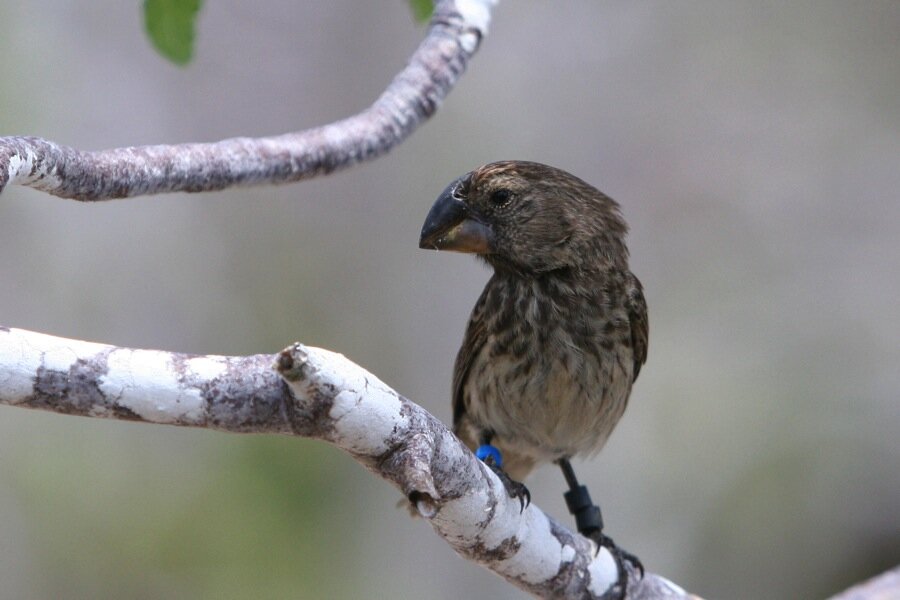Taking after Darwin, scientists discover beak gene for famous finches
Loading...
Nearly two centuries after Charles Darwin jotted down his notes about the Galapagos finches, scientists are still gaining insights into just how the iconic birds evolved.
By sequencing the genomes of more than 100 finches, an international research team has pinpointed the gene that determines how the birds’ beaks develop. The findings, published on Wednesday in the journal Nature, help to fill in the details of Darwin’s early research on evolutionary adaptation.
Darwin didn't realize it at the time, but in observing these finches, he was witnessing signs of what would become a central concept in evolutionary biology: adaptive radiation. In response to changes in the environment or the availability of new resources, species can tend to rapidly develop new and different traits, eventually diversifying into distinct species. With Darwin's finches, the fragmented environments of the Galapagos islands prompted this diversification, most prominently with the birds' beaks.
“It’s assumed that the ancestor of the bird came to the islands about 1.5 to 2 million years ago…and if you compare the sequences they are very similar to each other,” Leif Andersson, Uppsala University genetics professor and study co-author, told the Monitor. “But perhaps the most striking difference between them is this variation in beak shape.”
Because of this variety, finches with differently shaped beaks could exploit different food resources. For example, a pointed beak may be more successful at catching insects while a blunt beak may be suited for picking up seeds from the ground. But the genetics behind these adaptations has been, until now, unclear.
So the research team re-sequenced the genomes of all 15 finch species studied by Darwin in the Galapagos and on Cocos Island, as well as two close relatives of the species. And in the process of mapping out the radiation of these species, Andersson’s team determined the location of a gene that appears to play a critical role in determining beak shape.
After characterizing the gene, the team was able to classify two variants: one for blunt beaks and one for pointed beaks.
“We looked at that region across all birds and we saw that there was a very strong correlation between the characterization of the beak in the birds and the presence and absence of these two variants,” says Andersson.
Andersson and his colleagues also found evidence for what is known as interspecific gene flow, where species that are closely related can continue to breed successfully despite the existence of slightly different characteristics. His team says that this process of hybridization may have also contributed to the diversification of finches on the islands.
While the researchers found evidence suggesting that several genes have played a role in producing this variation among finches, the gene located in this study, entitled ALX1, is likely the most prominent determinant of beak shape, according to Andersson. And now the team can investigate other genes more closely.
“It’s very encouraging that we, in fact, are able to go out in nature and study evolutionary adaptation and identify the genes that have contributed to evolutionary change,” says Andersson.








